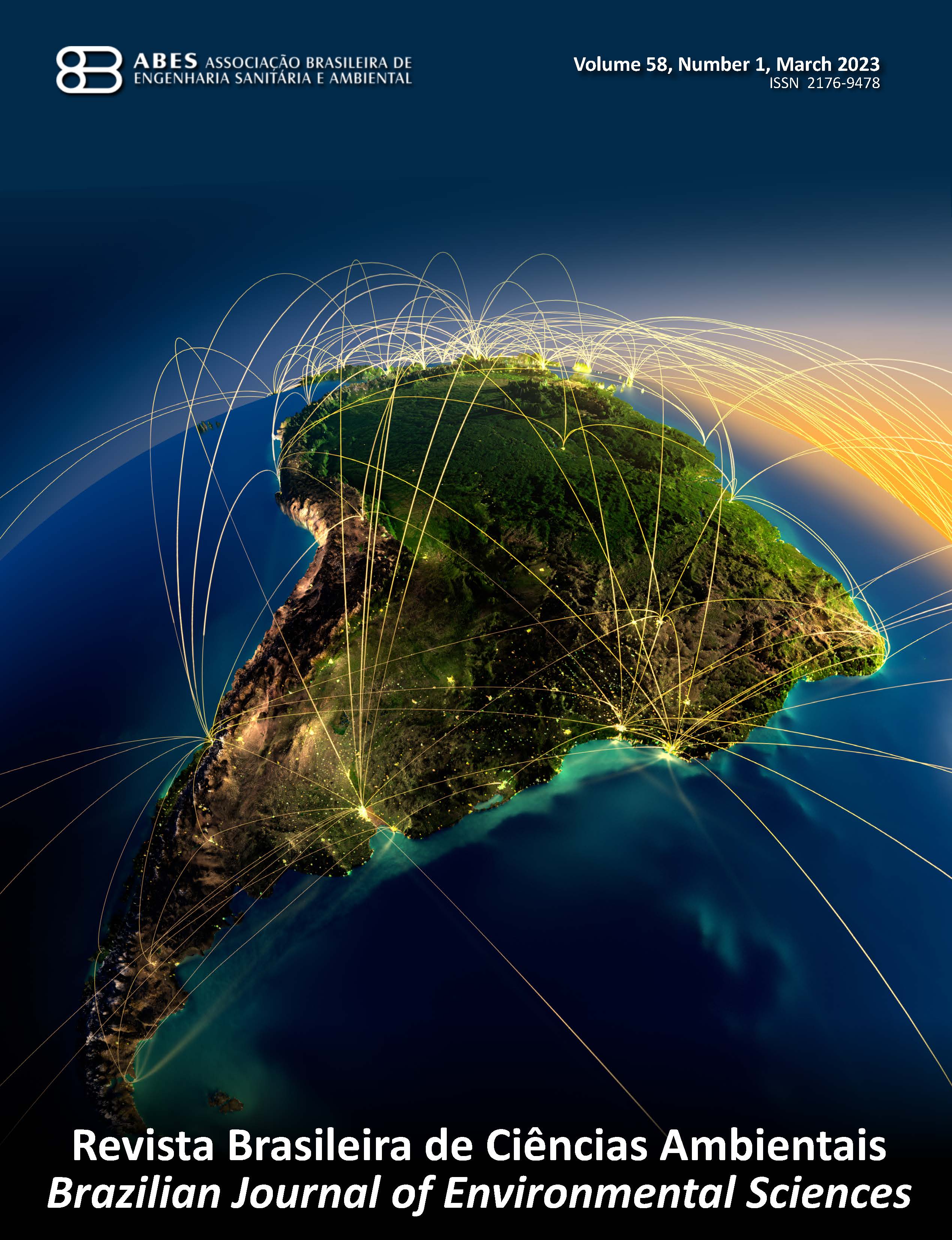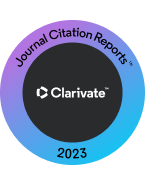Size-mass relationships of aquatic insects in forest streams: addressing a knowledge gap in Neotropical communities
DOI:
https://doi.org/10.5327/Z2176-94782253Palavras-chave:
comprimento do corpo; massa seca; determinação de biomassa; invertebrados aquáticos; riachos de Mata AtlânticaResumo
A determinação da massa seca dos indivíduos é crucial para o melhor entendimento da estrutura das comunidades em ecossistemas terrestres e aquáticos. O estabelecimento das relações tamanho–massa para diferentes populações constitui uma ferramenta útil para determinar indiretamente a biomassa total de comunidades de aquáticas. Neste estudo, determinamos as relações tamanho–massa de 14 gêneros das ordens Ephemeroptera, Plecoptera, Trichoptera e Odonata comumente encontradas em acúmulos de folhas em riachos da Mata Atlântica (SE Brasil). Utilizamos o comprimento do corpo dos indivíduos como medida de tamanho e três modelos matemáticos (linear, exponencial e power) para estabelecer as equações de melhor ajuste. As equações descritas pelo modelo power apresentaram o melhor ajuste (coeficiente de determinação [r²]≥0,80) para os gêneros Anacroneuria, Macrogynoplax (Plecoptera), Smicridea (Trichoptera), Archaegomphus, Idiataphe, Hetaerina, Heteragrion e Neocordulia (Odonata); o modelo exponencial mostrou o melhor ajuste para Phylloicus (r²=0,74), Triplectides (Trichoptera, r²=0,60), Enderleina (r²=0,96) e Tupiperla (Plecoptera, r²=0,60); enquanto o modelo linear apresentou o melhor ajuste para Elasmothemis (Odonata, r²=0,85) e Massartella (Ephemeroptera, r²=0,63). Os resultados obtidos demonstraram que o comprimento do corpo é um forte preditor da massa seca para a maioria dos gêneros estudados, mas algumas exceções sugerem que ele pode não capturar totalmente a variação da biomassa. O modelo power exibiu o melhor desempenho em geral, enquanto os modelos exponencial e linear foram ótimos para gêneros específicos, indicando diversas influências na alometria dos táxons. Este estudo reforça a necessidade de avaliar diferentes abordagens para estimar a massa seca de insetos aquáticos e ressalta o cuidado necessário ao utilizar métodos indiretos para determinação de biomassa.
Downloads
Referências
Akamagwuna, F.C.; Odume, O.N., 2020. Ephemeroptera, Plecoptera and Trichoptera (EPT) functional feeding group responses to fine grain sediment stress in a river in the Eastern Cape, South Africa. Environmental Monitoring and Assessment, v. 192 (4), 214. https://doi.org/10.1007/s10661-020-8187-4.
Alvares, C.A.; Stape, J.L.; Sentelhas, P.C.; Gonçalves, J.L.M.; Sparovek, G., 2013. Köppen's climate classification map for Brazil. Meteorologische Zeitschrift, v. 22 (6), 711-728. https://doi.org/10.1127/0941-2948/2013/0507.
Arnaud, S.; Kari, K.; Lenin, C.; André, M.; Olga, P.; Justin, P.; David, B.; Nedim, T.; Robby, S., 2022. Odonata trophic ecology: from hunting behavior to cross-ecosystem impact. In: Cordoba-Aguilar, A.; Beatty, C.; Bried, J. (Eds.), Dragonflies and Damselflies: Model Organisms for Ecological and Evolutionary Research. Oxford University Press, Oxford, pp. 219-232. https://doi.org/10.1093/oso/9780192898623.003.0016.
Azrita, A.; Syandri, H.; Aryani, N., 2024. Length and weight relationship, condition factor, and morphometric characteristics of eleven freshwater fish species in Koto Panjang reservoir, Indonesia. International Journal of Zoology, v. 2024, 9927705. https://doi.org/10.1155/2024/9927705.
Becker, B.; Moretti, M.S.; Callisto, M., 2009. Length–dry mass relationships for a typical shredder in Brazilian streams (Trichoptera: Calamoceratidae). Aquatic Insects, v. 31 (3), 227-234. https://doi.org/10.1080/01650420902787549.
Benke, A.C.; Huryn, A.D.; Smock, L.A.; Wallace, J.B., 1999. Length-mass relationships for freshwater macroinvertebrates in North America with particular reference to the Southeastern United States. Journal of the North American Benthological Society, v. 18 (3), 308-343. https://doi.org/10.2307/1468447.
Brito, J.P.; Carvalho, F.G.; Juen, L., 2021. Response of the Zygopteran community (Odonata: Insecta) to change in environmental integrity driven by urbanization in Eastern Amazonian streams. Ecologies, v. 2, 150-163. https://doi.org/10.3390/ecologies2010008.
Burgherr, P.; Meyer, E.I., 1997. Regression analysis of linear body dimensions vs. dry mass in stream macroinvertebrates. Archiv für Hydrobiologie, v. 139 (1), 101-112. https://doi.org/10.1127/archiv-hydrobiol/139/1997/101.
Collyer, G.; Perkins, D.M.; Petsch, D.K.; Siqueira, T.; Saito, V., 2023. Land‐use intensification systematically alters the size structure of aquatic communities in the Neotropics. Global Change Biology, v. 29 (14), 4094-4106. https://doi.org/10.1111/gcb.16720.
Costa, L.C.; Kiffer, W.P.; Casotti, C.G.; Moretti, M.S., 2018. Size-mass relationships in Trichodactylus fluviatilis Latreille, 1828 (Decapoda: Brachyura: Trichodactylidae), a macroconsumer in coastal streams of the Atlantic Forest, southeastern Brazil. Journal of Crustacean Biology, v. 38 (5), 539-546. https://doi.org/10.1093/jcbiol/ruy065.
Cressa, C., 1999. Dry mass estimates of some tropical aquatic insects. Revista de Biología Tropical, v. 47 (1-2), 133-141. https://doi.org/10.15517/rbt.v47i1-2.19062.
Dekanová, V.; Streberová, Z.; Novikmec, M.; Svitok, M., 2023. The effect of preservation on biomass and length estimates and its variation within and between two mayfly species. Limnology, v. 24 (3), 181-191. https://doi.org/10.1007/s10201-023-00715-8.
Dekanová, V.; Svitok, M.; Bento, S.; Caramelo, J.; Peixe e Sousa, P.; Carreira, B.M., 2024. Length-mass relationships of pond macroinvertebrates do not hold between Southern and Northern Europe. PeerJ, v. 12, e18576. https://doi.org/10.7717/peerj.18576.
Dekanová, V.; Venarsky, M.P.; Bunn, S.E., 2022. Length–mass relationships of Australian aquatic invertebrates. Austral Ecology, v. 47 (1), 120-126. https://doi.org/10.1111/aec.13077.
El Yaagoubi, S.; Edegbene, A.O.; El Alami, M.; Errochdi, S.; Harrak, R., 2024. Ephemeroptera, Plecoptera and Trichoptera (EPT) trait-based biomonitoring of rivers within the northwestern Rif of Morocco: implications for determining riverine ecosystems ecological health in Africa. Aquatic Sciences, v. 86 (2), 54. https://doi.org/10.1007/s00027-024-01070-1.
González, J.M., 2002. Size-mass relationships of stream invertebrates in a northern Spain stream. Hydrobiologia, v. 489 (1/3), 131-137. https://doi.org/10.1023/a:1023220501921.
Hamada, N.; Nessimian, J.L.; Querino, R.B., 2014. Insetos aquáticos na Amazônia brasileira: taxonomia, biologia e ecologia. Editora do INPA, Manaus, 724 p.
Hamada, N.; Thorp, J.H.; Rogers, D.C., 2019. Thorp and Covich’s Freshwater Invertebrates, Volume Three: Keys to Neotropical Hexapoda. Academic Press, [S.l.].
Hurtado-Borrero, Y.; Pinilla-A, G.; Tamaris-Turizo, C.E., 2020. Relations length-dry weight of nymphs Anacroneuria caraca Stark, 1995 and A. marta Zúñiga & Stark, 2002 (Plecoptera: Perlidae) from a neotropical mountain river. Hidrobiológica, v. 30 (3), 203-209. https://doi.org/10.24275/uam/izt/dcbs/hidro/2020v30n3/hurtado.
Jacquet, C.; Carraro, L.; Altermatt, F., 2022. Meta-ecosystem dynamics drive the spatial distribution of functional groups in river networks. Oikos, v. 2022 (11), e09372. https://doi.org/10.1111/oik.09372.
Johnston, T.A.; Cunjak, R.A., 1999. Dry mass–length relationships for benthic insects: a review with new data from Catamaran Brook, New Brunswick, Canada. Freshwater Biology, v. 41 (4), 653-674. https://doi.org/10.1046/j.1365-2427.1999.00400.x.
Kamburska, L.; Zaupa, S.; Boggero, A., 2023. Size-pattern and larval-length–mass relationships for the most common chironomid taxa in the deep subalpine Lake Maggiore. Water, v. 15 (15), 2730. https://doi.org/10.3390/w15152730.
Kiffer, W.P.; Mendes, F.; Rangel, J.V.; Barbosa, P.; Serpa, K.; Moretti, M.d.S., 2016. Size-mass relationships and the influence of larval and case size on the consumption rates of Triplectides sp. (Trichoptera, Leptoceridae). Fundamental and Applied Limnology, v. 188 (1), 73-81. https://doi.org/10.1127/fal/2016/0855.
Krynak, E.M.; Yates, A.G., 2020. Intensive agriculture alters the biomass size spectrum and body-mass of benthic insects: evidence from a reciprocal transfer experiment. Hydrobiologia, v. 847, 1221-1235. https://doi.org/10.1007/s10750-020-04178-1.
Liebmann, L.; Vormeier, P.; Weisner, O.; Liess, M., 2022. Balancing effort and benefit – How taxonomic and quantitative resolution influence the pesticide indicator system SPEARpesticides. Science of The Total Environment, v. 848, 157642. https://doi.org/https://doi.org/10.1016/j.scitotenv.2022.157642.
Lima, M.; Firmino, V.C.; De Paiva, C.K.S.; Juen, L.; Brasil, L.S., 2022. Land use changes disrupt streams and affect the functional feeding groups of aquatic insects in the Amazon. Journal of Insect Conservation, v. 26 (2), 137-148. https://doi.org/10.1007/s10841-022-00375-6.
Loomer, H.A.; Kidd, K.A.; Erdozain, M.; Benoy, G.A., Chambers, P.A.; Culp, J.M., 2023. Stream macroinvertebrate community responses to an agricultural gradient alter consumer-driven nutrient dynamics. Hydrobiologia, v. 850, 315-334. https://doi.org/10.1007/s10750-022-05070-w.
Mährlein, M.; Pätzig, M.; Brauns, M.; Dolman, A.M., 2016. Length–mass relationships for lake macroinvertebrates corrected for back-transformation and preservation effects. Hydrobiologia, v. 768 (1), 37-50. https://doi.org/10.1007/s10750-015-2526-4.
Martin, C.A; Proulx, R.; Magnan, P., 2014. The biogeography of insects’ length–dry mass relationships. Insect Conservation and Diversity, v. 7 (5), 413-419. https://doi.org/10.1111/icad.12063.
Martins, R.T.; Melo, A.S.; Gonçalves Jr, J.F.; Hamada, N., 2014. Estimation of dry mass of caddisflies Phylloicus elektoros (Trichoptera: Calamoceratidae) in a Central Amazon stream. Zoologia, v. 31 (4), 337-342. https://doi.org/10.1590/s1984-46702014000400005.
McCarty, J.D.; Cross, W.F.; Albertson, L.K.; Tumolo, B.B.; Sklar, L.S., 2022. Life histories and production of three Rocky Mountain aquatic insects along an elevation-driven temperature gradient. Hydrobiologia, v. 849, 3633-3652. https://doi.org/10.1007/s10750-022-04978-7.
Méthot, G.; Hudon, C.; Gagnon, P.; Pinel-Alloul, B.; Armellin, A.; Poirier, A.M.T., 2012. Macroinvertebrate size–mass relationships: how specific should they be? Freshwater Science, v. 31 (3), 750-764. https://doi.org/10.1899/11-120.1.
Meyer, E.I., 1989. The relationship between body length parameters and dry mass in running water invertebrates. Archiv für Hydrobiologie, v. 117 (2), 191-203. https://doi.org/10.1127/archiv-hydrobiol/117/1989/191.
Miserendino, M.L., 2001. Length-mass relationships for macroinvertebrates in freshwater environments of Patagonia (Argentina). Ecología Austral, v. 11 (1), 3-8. ISSN 1667-782X.
Mocq, J.; Dekanová, V.; Boukal, D.S., 2024. Length–mass allometries of the larvae of aquatic dipterans: differences between taxa, morphological traits, and methods. Journal of Insect Science, v. 24 (1), 10. https://doi.org/10.1093/jisesa/ieae012.
Nakagawa, H.; Takemon, Y., 2014. Length-mass relationships of macroinvertebrates in a freshwater stream in Japan. Aquatic Insects, v. 36 (1), 53-61. https://doi.org/10.1080/01650424.2014.1001400.
Oester, R.; dos Reis Oliveira P.C.; Moretti, M.S.; Altermatt, F.; Bruder, A., 2023. Leaf-associated macroinvertebrate assemblage and leaf litter breakdown in headwater streams depend on local riparian vegetation. Hydrobiologia, v. 850, 3359-3374. https://doi.org/10.1007/s10750-022-05049-7.
R Core Team, 2024. R: A language and environment for statistical computing. R Foundation for Statistical Computing, Vienna, Austria.
Schneider, C.A.; Rasband, W.S.; Eliceiri, K.W., 2012. NIH Image to ImageJ: 25 years of image analysis. Nature Methods, v. 9 (7), 671-675. https://doi.org/10.1038/nmeth.2089.
Smock, L.A., 1980. Relationships between body size and biomass of aquatic insects. Freshwater Biology, v. 10 (4), 375-383. https://doi.org/https://doi.org/10.1111/j.1365-2427.1980.tb01211.x.
Towers, D.J.; Henderson, I.M.; Veltman, C.J., 1994. Predicting dry weight of New Zealand aquatic macroinvertebrates from linear dimensions. New Zealand Journal of Marine and Freshwater Research, v. 28 (2), 159-166. https://doi.org/10.1080/00288330.1994.9516604.
Wahl, C.; Diaz, R; Kaller, M., 2021. Invasive floating fern limits aerial colonization and alters community structure of aquatic insects. Wetlands, v. 41, 60. https://doi.org/10.1007/s13157-021-01457-y.
Wenzel, F.; Meyer, E.; Schwoerbel, J., 1990. Morphometry and biomass determination of dominant mayfly larvae (Ephemeroptera) in running waters. Archiv für Hydrobiologie, v. 118 (1), 31-46. https://doi.org/10.1127/archiv-hydrobiol/118/1990/31.
Wonglersak, R.; Fenberg, P.B.; Langdon, P.G.; Brooks, S.J.; Price, B.W., 2021. Insect body size changes under future warming projections: a case study of Chironomidae (Insecta: Diptera). Hydrobiologia, v. 848 (11), 2785-2796. https://doi.org/10.1007/s10750-021-04597-8.
Zamora-Camacho, F.J., 2025. We are what what we eat eats: the effects of prey diet on growth, development, behavior and survival of a secondary consumer. Hydrobiologia, v. 852, 55-67. https://doi.org/10.1007/s10750-024-05637-9.
Zilli, F.; Barco, J.D.; Vanzetti, A., 2017. Biometry of neotropical invertebrates inhabiting floodplain rivers: unraveling bionomy. Iheringia. Série Zoologia, v. 107, e2017014. https://doi.org/10.1590/1678-4766e2017014.
Downloads
Publicado
Como Citar
Edição
Seção
Licença
Copyright (c) 2025 Revista Brasileira de Ciências Ambientais

Este trabalho está licenciado sob uma licença Creative Commons Attribution 4.0 International License.

























